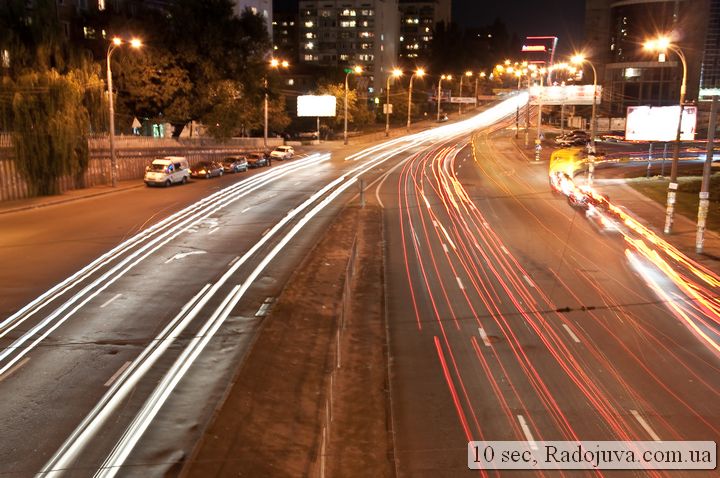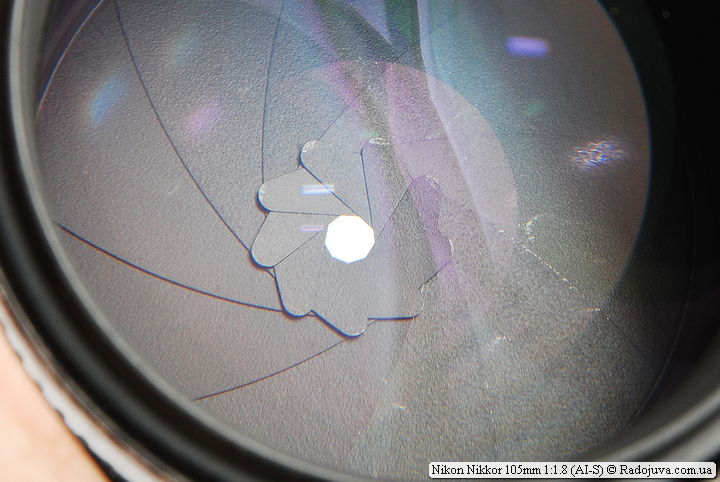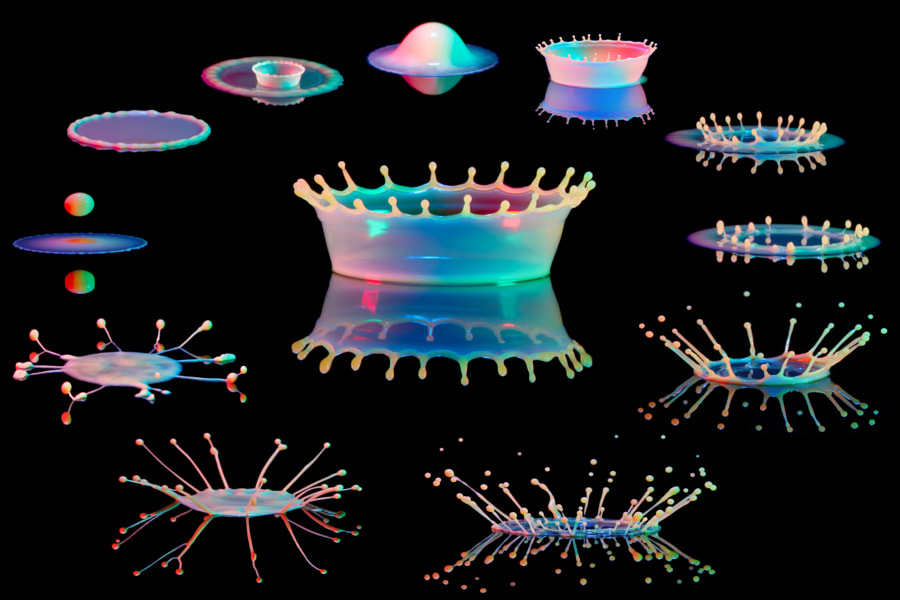What is a diaphragm?
 Aperture is easy. In a nutshell, the diaphragm is a device in the lens that measures the amount of light.
Aperture is easy. In a nutshell, the diaphragm is a device in the lens that measures the amount of light.
Nikon Nikkor 105mm 1: 1.8 (AI-S) aperture blades on ZK
Aperture device in the Nikon Nikkor 105mm 1: 1.8 (AI-S) lens
For a better understanding of the operation of such a device, I will give an example from life. When people look at the sun, they squint their eyes, that is, they reduce the gap through which light passes. If people had not squinted, the sun would have burned the retina of their eyes with their strong light. At night, you need to do the opposite – open your eyes wider to capture more light, while the pupils also expand. Eyes with large pupils have many animals that need to see well at night.
Often the aperture is also called ‘aperture’ or ‘aperture’ or ‘relative aperture’ or ‘number F‘. These concepts are strongly interconnected and for many photographers are synonymous. But among them there are small differences described below.
The relative lens aperture is the ratio of the actual lens aperture to the focal length of the lens. The reciprocal of the relative aperture is called the diaphragm number or aperture number.
The relative aperture of the lens is expressed numerically by ratio or fraction. For example, take a lens that has a relative aperture 16 times smaller than its focal length; as a result, the relative aperture can be numerically written in the following ways: 1:16 or f1 / 16 or f = 1: 16 or F 1:16, etc. d. There is no particular difference in the recording, and every photographer will always understand what is at stake.
If we take the number opposite to the relative aperture, then we get the number of aperture. Usually it is under this number that photographers directly understand the general term ‘aperture’. If we take the same lens that has a relative aperture 16 times smaller than its focal length, then its aperture number will be equal to 16. And numerically it can be written in the following ways: F16, F / 16, 16 (such a ‘bare’ number aperture is indicated on the lens barrel). There is no particular difference in the entry.
Some lenses have an aperture ring on their body. There is usually a marking on the ring, consisting solely of aperture numbers (shown in the figure below). Almost all modern lenses do not have such a ring, and the diaphragm is controlled by the electronics and camera controls.
Nikon ED AF Nikkor 80-200mm 1: 2.8D (MKII) aperture ring
Aperture ring on the Nikon ED AF Nikkor 80-200mm 1: 2.8D (MKII) lens. Using the ring you can set the values F / 2.8, F / 4, F / 5.6, F / 8, F / 11, F / 16, F / 22.
Usually the concepts of ‘aperture’ and ‘aperture’ are synonyms, but in reality there is a certain sacristy between them. So, the diaphragm is responsible only for the geometric aperture (the ratio of linear geometric indicators). And for the total ‘real aperture’ of the lens, not only the aperture is responsible, but also many other factors: the optical design of the lens, the percentage of reflection and transmission of light by the lens, the fall of the aperture when focusing at different distances, the percentage of light absorption by the photo filter, etc. Details about the difference between the concepts of ‘aperture’ and ‘aperture’ can be found in the section on ‘T-stops‘.
The aperture is also sometimes called the объ Lens Aperture ’(Latin‘ Apertura ’-‘ Hole ’). Therefore, on many cameras, the aperture-priority metering mode is called ‘A‘ or ‘AV‘ – ‘Aperture Value’ – ‘Aperture Value’. Details about this mode are described in the section ‘P, A (AV), S (TV), M‘.
Please note that the magnitude of the front lens of the lens and, in fact, the magnitude of the front light filter have no direct relation to the aperture ratio of the lens. Different lenses with the same focal length and the same maximum aperture can have completely different diameters for their front lenses. For example, take two class 50 mm F / 1.4 lenses: Nikon AF Nikkor 50mm 1: 1.4D and Sigma 50mm 1: 1.4 DG HSM EX. The first has a tiny filter diameter of 52 mm, the second has a huge diameter of 77 mm. But their aperture (almost the maximum aperture) will be the same.
What is the diaphragm?
By the mechanical part of the diaphragm device is understood a changing circular hole in the lens. Typically, the hole opens and closes with the petals. In this case, the petals are called the aperture blades, and the aperture itself is called ‘iris’ (from the English ‘iris’ – ‘the iris of the eye’). The amount and roundness of the diaphragm blades determines how much the hole will be round. The stronger the rounding of the aperture, the better. Professionals often call the diaphragm simply ‘hole‘, since it is a real, kind of hole that changes its size and doses the amount of light.




